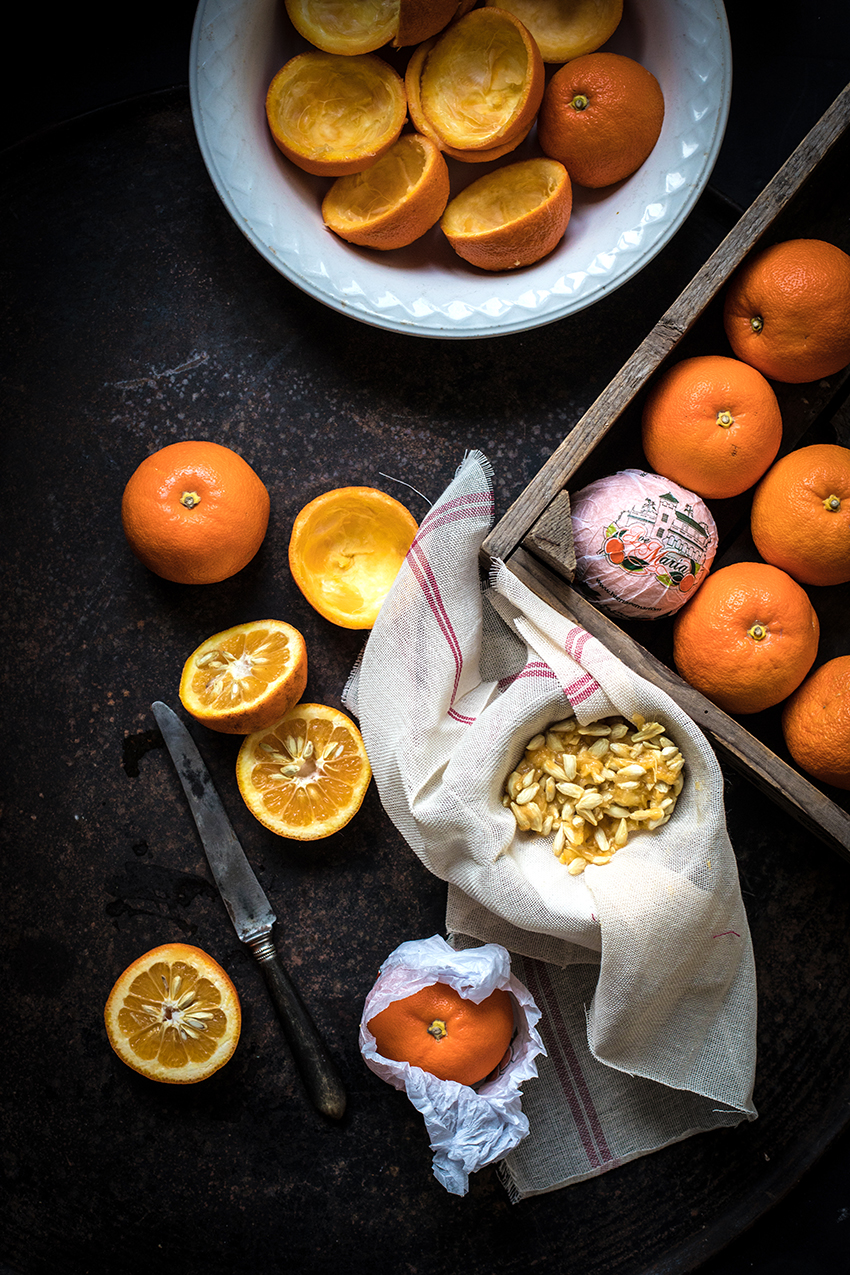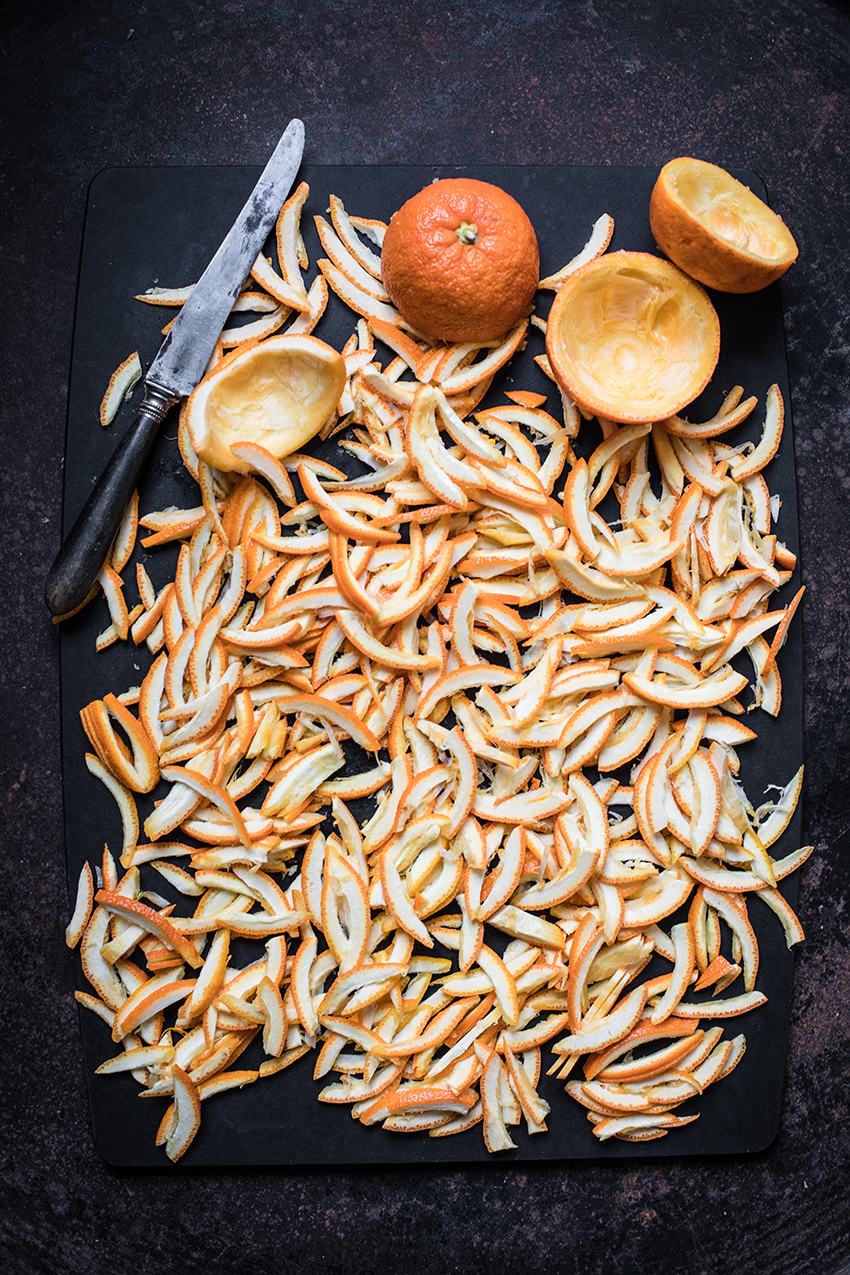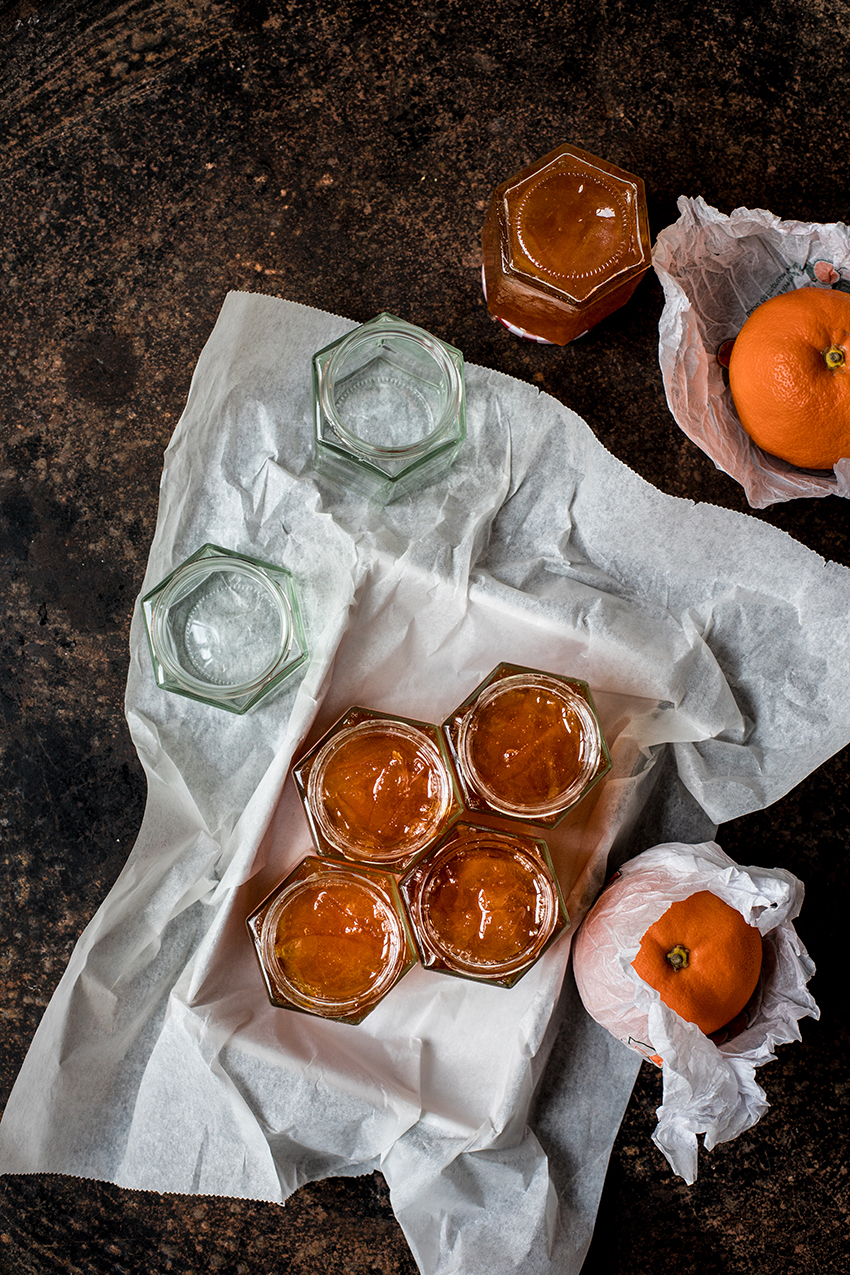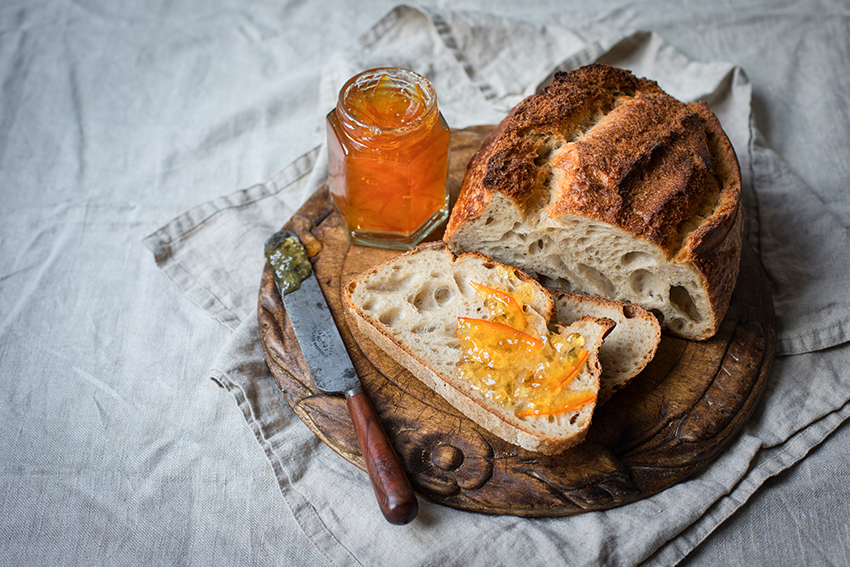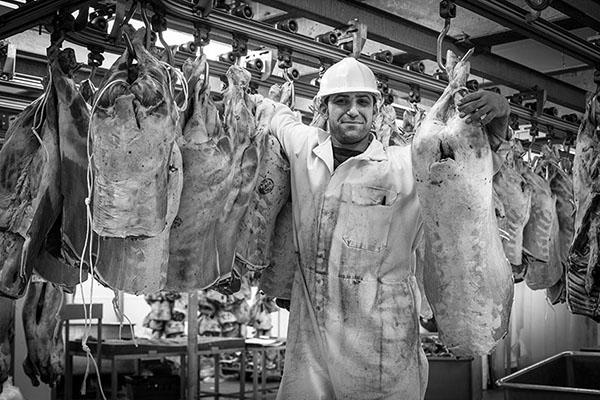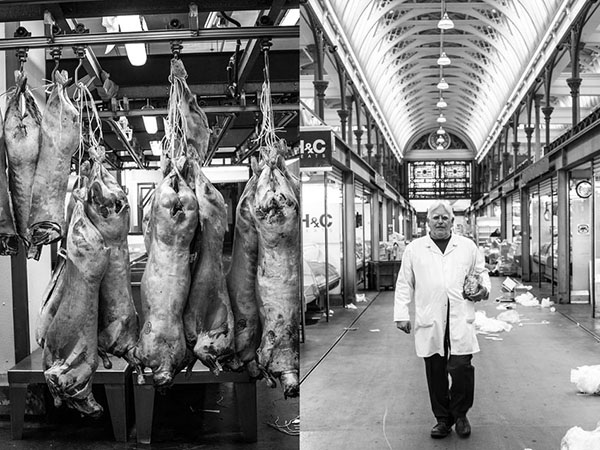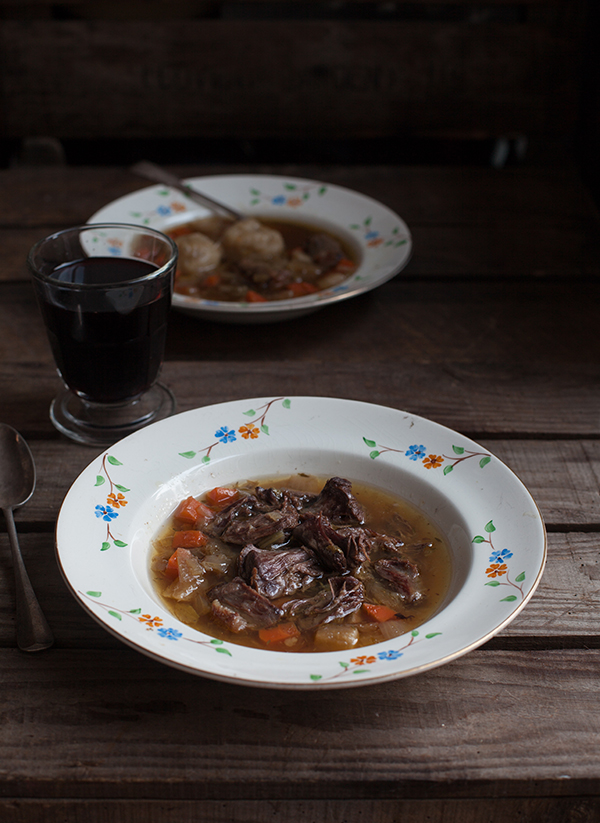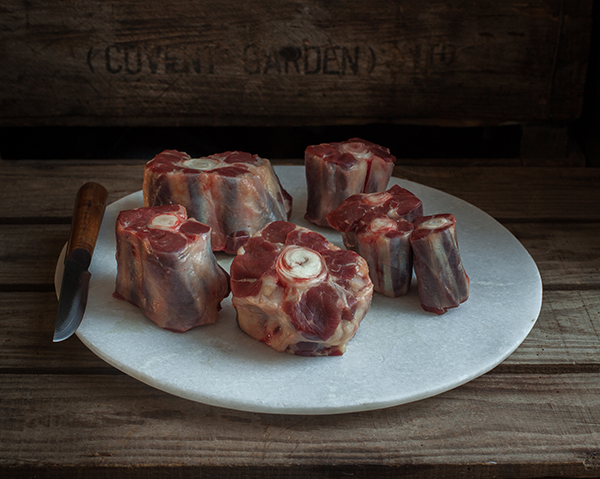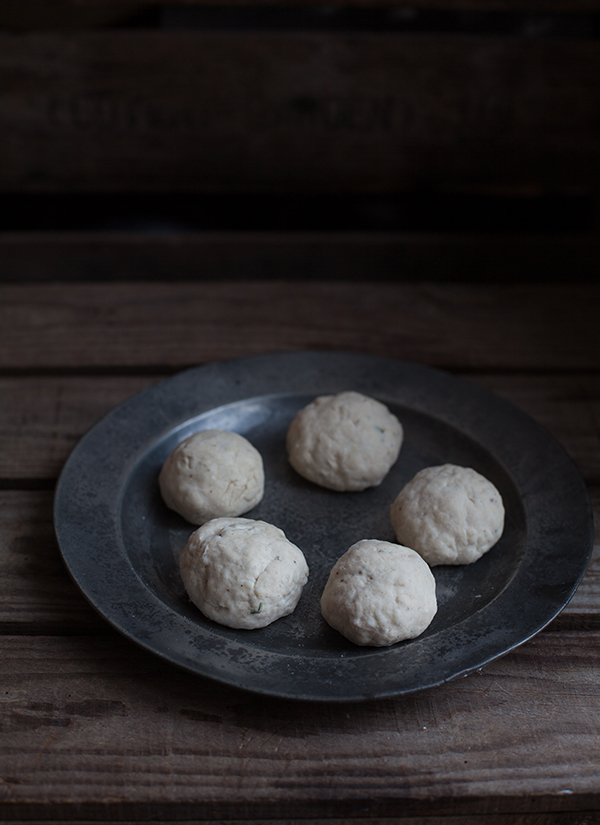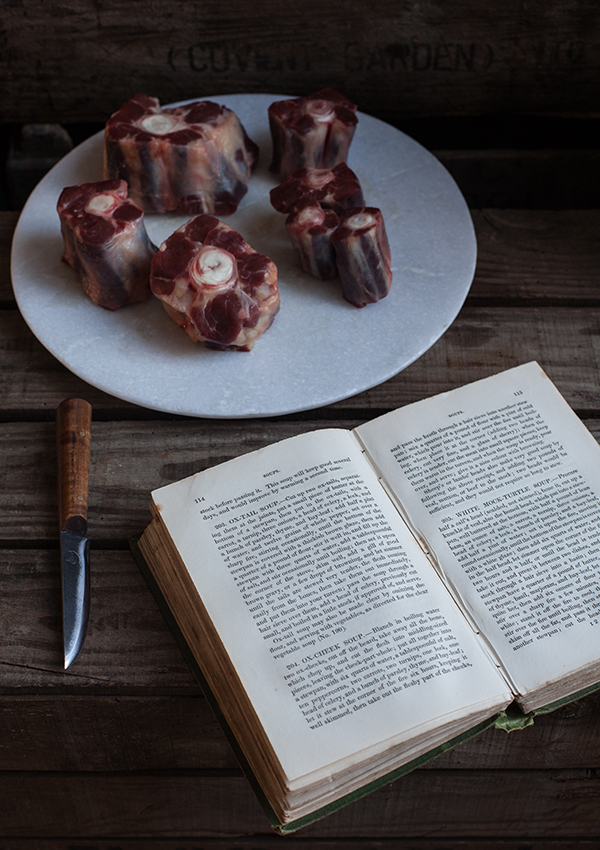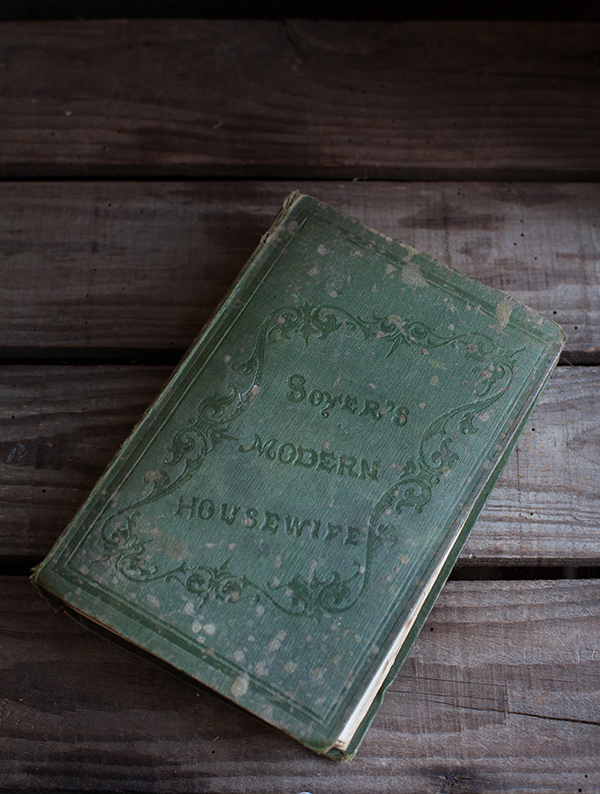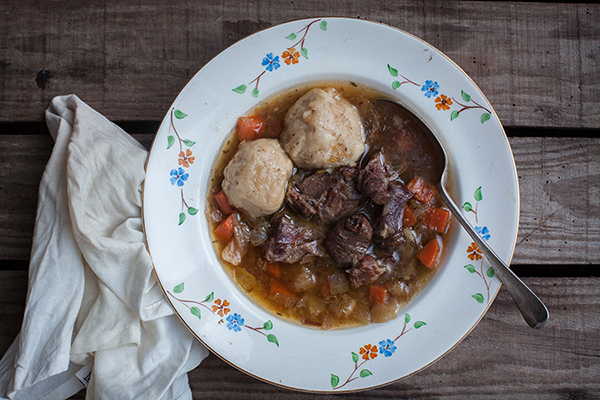The post Bitter Seville Orange Marmalade – A Potted History and How to Make it appeared first on Miss Foodwise.
]]>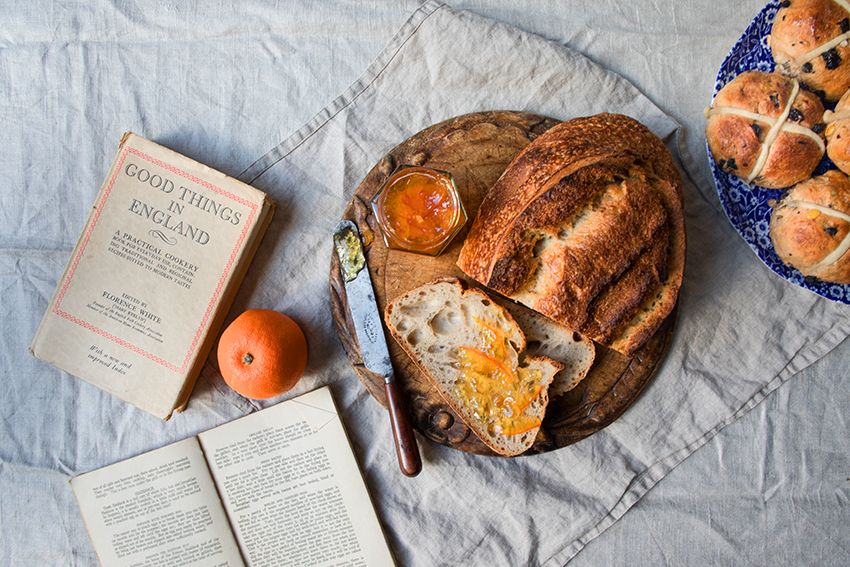
Marmalade is like Marmite, you either love it or loathe it.
Marmalade is loved in Britain, smeared on golden toast as the last course of the English Breakfast. The humble jar of sunshine even has its own Marmalade Awards each year in Cumbria in the North of England. Anyone can send in their jar to be judged by marmalade royalty, and my friend Lisa from All Hallows Cookery School in Dorset just won with hers.
In a time when bitter flavour is bred out of vegetables and fruits, you would think many people are not that fond of marmalade. Marmalade is traditionally made from bitter Seville oranges. Originally from Asia, the Moors introduced these oranges in Spain around the 10th century. They are quite inedible in their raw state and if you can manage I salute you. Because of their sourness Seville oranges contain a high amount of pectin. In 17 and 18th century cookery books they get a mention as ‘bitter oranges’ and it wouldn’t be an British classic without a story.
The legend
In the mid 18th century a Spanish ship carrying Seville oranges was damaged by storm. The ship sought refuge in the harbour of Dundee in Scotland where the load deemed unfit for sale were sold to a local merchant called James Keiller. James’ mother turned the bitter orange fruit into jam and so created the iconic James Keiller Dundee Marmalade. It wasn’t a coincidence that James mother made marmalade, in the 1760s her son ran a confectionery shop producing jams in Seagate, Dundee. In 1797 he founded the world’s first marmalade factory producing the first commercial brand of marmalade. In 1828, the company became James Keiller and Son, when his son joined the business. Today you can see stone James Keiller and Son marmalade jars pop up at every carboot sale and antiques market. But the marmalade is still in production, only now in glass jars that off the beautiful radiant orange colour that is so typical of marmalade.
The truth as clear as marmalade
According to Ivan Day, a prominent food historian who I was lucky to do a course with, one of the earliest known recipe for a Marmelet of Oranges dates from around 1677 and it can be found in the recipe book of Eliza Cholmondeley held in the Cheshire Archives and Local Studies.
The earliest recipe in Scotland is titled ‘How to make orange marmalat’ and dates back 1683. It can be found in the earliest Scottish manuscript recipe book which is believed to have been written by Helen, Countess of Sutherland of the Clan Sutherland. The book is dedicated entirely to fruit preservation and jelly making. According to The Scotsman “The Countess was married to John Gordon, the 16th Earl of Sutherland, an army officer who was honoured following the defeat of the 1715 Jacobite rebellion.”
This bit of information transports me right to the wuthering heights of Scotland.
This early Scottish as well as English recipe debunks the myth that mother Keiller invented marmalade. Recipes for similar preserves even date back earlier in history. But the Keiller family definitely deserve a prominent spot in marmalade history.
But why do we call it marmalade and not jam?
As you maybe remember from my posting about ‘Quince Cheese’ here > , quinces are responsible for the word marmalade as their Portuguese word is ‘marmelo’ and they were made into fruit cheeses named marmalades. In Spain they call it ‘Membrillo’. Quince just like bitter Seville oranges, contain a lot of pectin and they are both too sour to eat raw. From both of these fruits the pips and peels are used to get a good set, and if you don’t have quince you could easily make a fruit cheese out of these oranges.
If you’re a marmalade fan, chances are you have a particular favourite. You either love every jar that you can find on your breakfast table or you prefer either thick cut, thin cut, or vintage. The cut of course refers to how thick the peel is cut, I like mine as thin as possible. Vintage is a jar you left in the back of your preserve cupboard to age and turn dark amber in colour and deep in flavour. Then there are two kinds I don’t really want to include in the different types of marmalades and that is the flavoured kind, this could be spices, whisky or any other type of booze. I can understand whisky and grand marnier, but as I’ve made marmalade with cardamom, I have to conclude that that jar was something entirely different to marmalade. When it comes to preserves I’m quite the purist. If additions flavour and not just compliments the taste of the fruit, it’s a big no no for me.
What makes a marmalade
There is something to be said about sugar as well. Some use plain white sugar, others use demerara (cane sugar), others use molasse or jam sugar (minut sugar). You don’t need the added pectin of jam sugar, I find molasse to be too dominant, white sugar from sugar beets is something I hardly use except for jam so I decided to use 2/3 of plain white sugar and 1/3 demerara. I don’t want my marmalade to be dark in colour, I want it to be beautifully bright orange.
And finally the fruit… without wanting to be a food snob, organic or untreated bitter oranges are your only option. Remember that you will be using the peel so your fruit needs to be of the best quality. Many Seville oranges are harvested from trees which grow by the road and in the city. These are dirty oranges. I like to know what I put in my jam jar so it’s better to be safe and buy organic. This isn’t sponsored in any way but I’ve found Ave Maria is a farm that sells organic Sevilles, they are stocked in some British supermarkets (ask them on twitter).
I’ve looked at a couple of recipes and the ingredients and method is usually identical. Before I share my recipe (which is identical to many out there) I’ll leave you with some links for you to look at.
Felicity Cloake for The Guardian: How to make the perfect marmalade >
Giulia Scarpaleggia, my dear Italian friend who has access to the best oranges and makes this marmalade every season in big batches: Bitter Orange marmalade and nothing else >
Orange Marmalade
What do you need
- 1 kg bitter organic oranges (no compromise!)
- 1 large lemon
- 2,5 l water
- 500 g demerara sugar
- 1500 g castor sugar
Equipment
- Stainless steel pot
- Muslin
- a selection of sterilised jars
- a juicer if you have one
- a jam thermometer
Method
(I like to do the prep the evening before, then let it sit overnight, you can however do it in one day)
Juice all your oranges and the lemon, keep the pips and all the bits aside. Place the square of muslin cloth in a bowl and crape the pips and bits into it, close with a twine long enough so you’re able to tie it to the outside of the pot.
Finely slice the peels of the oranges, the thickness is your choice, I like the thinnest I can manage and use my sharpest knife for this. Transfer the shredded peel to the pot, tie the parcel of muslin to the pot and pour over the juice and the water then bring to a boil and leave to simmer for 2-2,5 hours. This is to soften the peel, if you like a bite to the peel, check regularly from 2 hours towards the end of the cooking time.
Leave to cool then remove the muslin parcel and squeeze it as hard as you can to get out as much of the juice as you can.
Now to make the marmalade bring the juice back to a simmer and add the sugar, stir well until it is completely dissolved. Bring to a boil, place a saucer or two in the fridge or freezer and check the temperature to reach 104 degrees – which is when the jam should be setting. Test a bit of jam on one of the cold saucers to see if it sets, if not, continue to boil and try again, and again if needed.
When the marmalade is setting, leave to cool for a few minutes before filling your jars.
After filling I still invert the jars because that is what my grandmother and mother did, but you can add wax or boil again in the jars, whatever method you’re used to.
Use on your hot toast or in cakes or puddings!
Next week… Hot Cross Buns revised!
The post Bitter Seville Orange Marmalade – A Potted History and How to Make it appeared first on Miss Foodwise.
]]>The post Smithfield Meat Market – a history and a nomination for the Pink Lady Food photography award! appeared first on Miss Foodwise.
]]>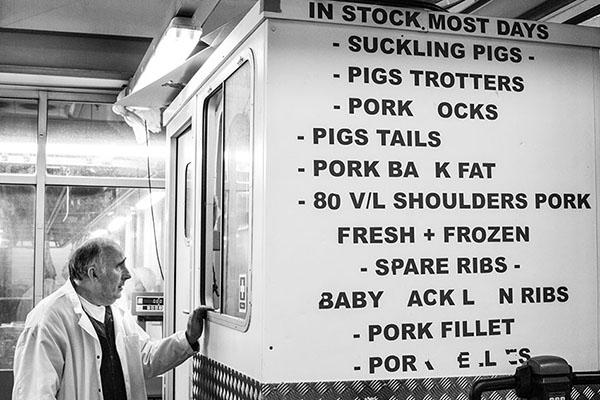 Smithfield Market, 865 years of notorious history of meat, bloodshed, crime and uprising.
Smithfield Market, 865 years of notorious history of meat, bloodshed, crime and uprising.Turning down Sun Street and Crown Street, and crossing Finsbury square, Mr. Sikes struck, by way of Chiswell Street, into Barbican: thence into Long Lane, and so into Smithfield; from which latter place arose a tumult of discordant sounds that filled Oliver Twist with amazement. It was market-morning. The ground was covered, nearly ankle-deep, with filth and mire; a thick steam, perpetually rising from the reeking bodies of the cattle, and mingling with the fog, which seemd to rest upon the chimney-tops, hung heavily above. All the pens in the centre of the large area, and as many temporary pens as could be crowded into the vacant space, were filled with sheep; tied up to posts by the gutter side were long lines of beasts and oxen, three or four deep. Countrymen, butchers, drovers, hawkers, boys, thieves, idlers, and vagabonds of every low grade, were mingled together in a mass; the whistling of drovers, the barking dogs, the bellowing and plunging of the oxen, the bleating of sheep, the grunting and squeaking of pigs, the cries of hawkers, the shouts, oaths, and quarrelling on all sides; the ringing of bells and roar of voices, that issued from every public-house; the crowding, pushing, driving, beating, whooping and yelling; the hideous and discordant dim that resounded from every corner of the market; and the unwashed, unshaven, squalid, and dirty figues constantly running to and fro, and bursting in and out of the throng; rendered it a stunning and bewildering scene, which quite confounded the senses.
Charles Dickens – Oliver Twist, 1838And so were the words of Charles Dickens about Smithfield meat market in his marvellous work Oliver Twist.
England has always been famed for the outstanding quality of its meat. In the 19th century, Smithfield meat market was notorious for its wild cattle that was hazardously driven through the streets of London. The drovers and butchers were apparently as savage as their cattle and murder and rape were no exceptions in these quarters.
Reports of cattle stirred up by drunk herdsmen killing men, woman and children on their way were frequent. Cattle was slaughtered at the site and the streets coloured red with blood.Surrounded by dirty streets, lanes, courts, and alleys, the haunts of poverty and crime, Smithfield is infested not only with fierce and savage cattle, but also with the still fiercer and more savage tribes of drivers and butchers. On market-days the passengers are in danger of being run over, trampled down, or tossed up by the drivers or “beasts”; at night, rapine and murder prowl in the lanes and alleys in the vicinity; and the police have more trouble with this part of the town than with the whole of Brompton, Kensington, and Bayswater. The crowding of cattle in the centre of the town is an inexhaustible source of accidents.Max Schlesinger, Saunterings in and about London, 1853
From 1150,
Smithfield has been used as a market for live stock. It was a large open space on the outskirts of town, it had small open spaces and wooden pens and a broad open street market.
In 1174 Smithfield was described by William Fitzstephen, clerk to Thomas à Becket in his ‘Description of London’, one of my favourite works to learn about Ancient London and its people.
‘In a suburb immediately outside one of the gates there is a field that is smooth, both in name and in fact. Every Friday (unless it is an important holy day requiring solemnity) crowds are drawn to the show and sale of fine horses. This attracts the earls, barons and knights who are then in the city, along with many citizens, whether to buy or just to watch.’
A description of London, ca.1174/1183, translated from Latin.
The ancient map of London ‘Civitas Londinum’ dated to 1561, shows large open fields and cattle pens. The market area is now called ‘Schmyt Fyeld’. During that time the market area had access to the river Fleet so cattle had water to drink and grass to feed on.
Because Smithfield was an open space which was so close to the city centre, it was also used for public executions. William Wallace – known to most as Braveheart after the film – was executed there in 1305. It was also the meeting place to gather for the Peasant’s Revolt in 1381. Executions continued well into the 16th century with Henry VIII murdering Catholics and his daughter ‘Bloody Mary’ burning in excess of 200 protestants. During the 17th century the site became a popular place for duelling and later it turned into a prime spot to pick up a prostitute for the night.
The structure of the market would remain largely the same as in the Middle Ages until a building was erected designed by Victorian architect Sir Horace Jones in 1868. By then the market was in the centre of London instead of in the outskirts, adjoining fields.
We can still see that majestic market building today, and some of its additions from later in that century, but sadly a part of it has been derelict for many decades now.
When I visited the market I was warned by Londoners that some of the butchers were still cheeky buggers and they weren’t kidding. On my short walk around I got talking to one of them, I took his picture, asked him if I could use the image, and he gave me his phone number and told me to call him some time.
The market was at its end of trading that day when I visited, meat was being packed up and carted away in supermarket trolleys, leaving it to look nearly as rough and dirty as it must have looked centuries ago.
It is a historic place, there has been a cattle market here for 865 years, and I hope it will remain here for centuries to come. It’s extraordinary that after the relocation of Billingsgate Fish market, Covent Garden and Spitalfields market, Smithfield market is still holding strong.
It is a heritage site, and with so many historical important places being demolished in London today – think the London Wool and fruit exchange in Shoreditch – we have to hang on to this one while we can.
 |
| Looking up in the meat market building |
 |
| Supermarket carts are used to move the meat and are scattered around everywhere |
 |
| though crumbling, still a special place |
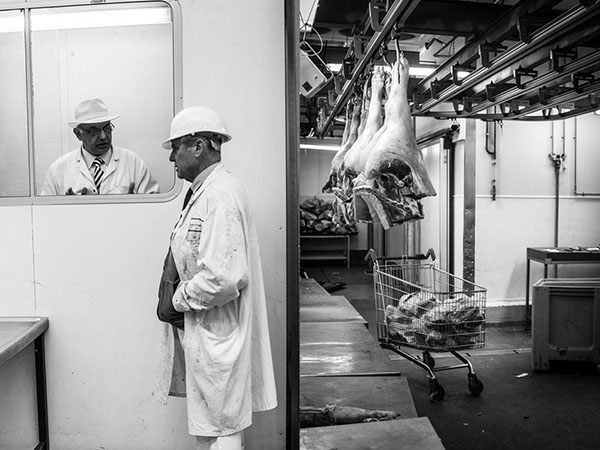 |
| Butchers chatting during the clean-up of todays market day |
 |
| One of the loading gates |
 |
| Lorries are driving on and off with loads of meat |
 |
| The butchers don’t mind posing a little for my camera |
 |
| Part of the market in its derelict state, still waiting to be renovated and repurposed |
Dear readers, the above image from Smithfield market has been shortlisted in the prestigious Pink Lady Food Photography Awards in the category ‘Food For Sale’ for the People’s choice award. If you like my work, I would be super grateful if you would vote for my photograph!
Do leave a comment, I love hearing from you!
The post Smithfield Meat Market – a history and a nomination for the Pink Lady Food photography award! appeared first on Miss Foodwise.
]]>The post Alexis Soyer’s Oxtail Soup with simple suet dumplings appeared first on Miss Foodwise.
]]>19th century Victorian England saw a rapid growth of population and urbanisation stimulated by the Industrial Revolution. The elite became more wealthy and the poor became poorer. Eliza Acton noted in her book published in 1845, that soups or pottage was hardly eaten by the English. The poor didn’t have means to heat up the dish that had sustained them for centuries, and often they didn’t even have access to the ingredients to make a soup. This was an era of slum housing, starvation and disease.
Of course the old lady was illiterate and Soyer realising that he might have sent a useless bit of paper to her, went to see her and found ‘six elderly matrons and an old man holding council together’, trying to make out Soyer’s writings. He then read the recipes to them.
Of soup he says that he finds it is no wonder that people have abandoned this dish as the recipes in most cookery books are complicated and expensive. Many contemporary cookery writers like Mrs Beeton made notes on how to cook economically but showed their ignorance by not grasping the fact that most lower class families were lucky to have some kind of roof over their heads, so a kitchen or fire would most probably been a luxury they could only dream of.
To make this into a main dish for your supper, you can add dumplings, I give you here the recipes as adapted from Soyer’s book The Modern Housewife or Menagerie.
Oxtail soup with dumplings
- 1 oxtail
- 1 carrot
- 1 turnip
- 3 medium sized onions
- 1 stalk of celery
- 2 bay leaf
- a few sprigs of thyme
- a few sprigs of parsley
- 600ml water
- 1tsp of peppercorns, or about 15 corns
- 1tsp salt
- 1 carrot
- 1 stalk of celery
- 1 leek
- 1 turnip
- 220 g plain white flour
- 110 g shredded suet
- 0,5 tsp salt, the same of pepper
- 150-180 ml water
- optional: a tsp of thyme leaves or parsley cut finely
The post Alexis Soyer’s Oxtail Soup with simple suet dumplings appeared first on Miss Foodwise.
]]>